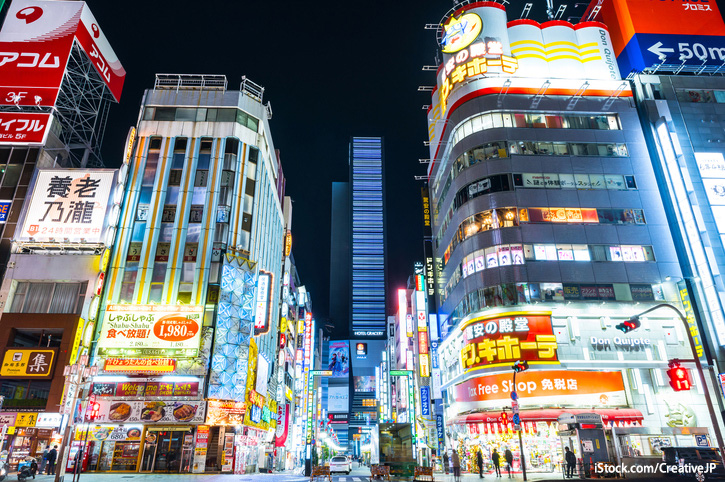13 Vital Q&As for your Japan trip
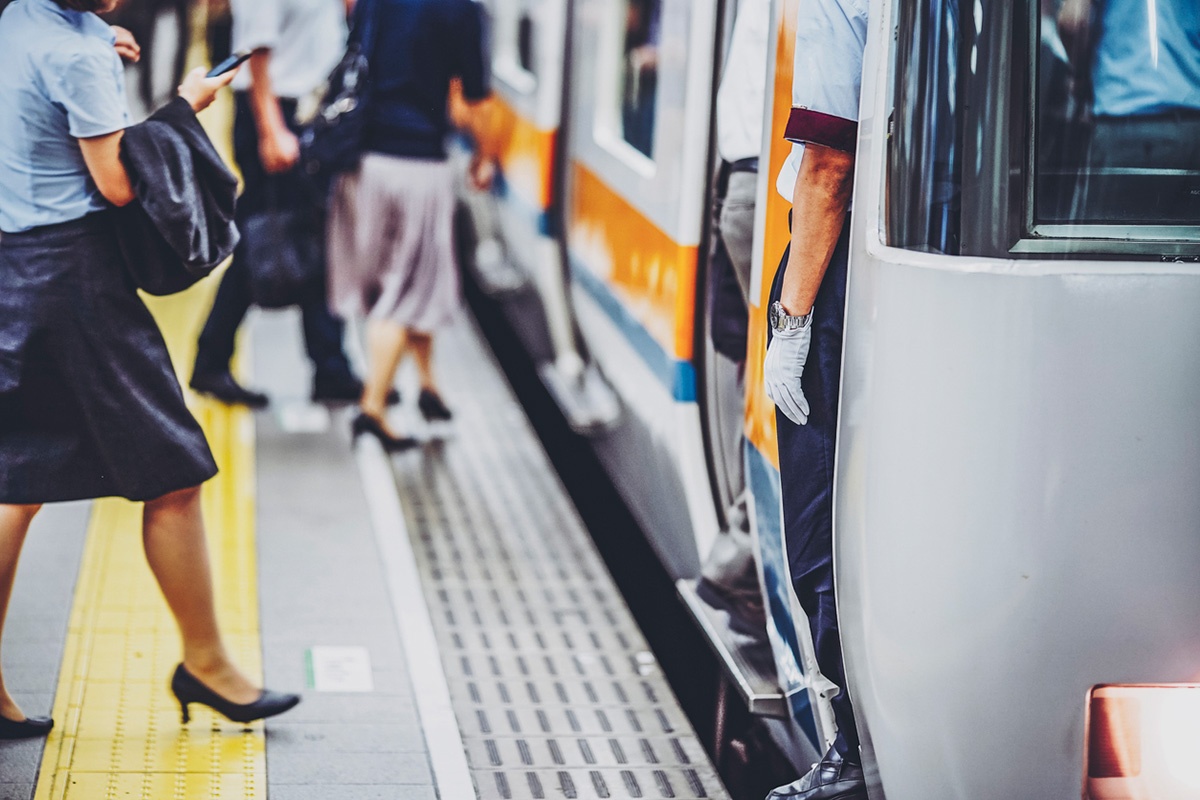
Despite the entry ban for tourists during the COVID-19 pandemic, Japan hardly lost its popularity as a travel destination. On the contrary, since the borders were fully opened in October 2022, the number of foreign visitors has been rapidly increasing. So, now is a great opportunity for travel planning! (Information as of November 2023)
For travelers who have never been to Japan but are eager to explore its history and culture firsthand, there is often a lot of uncertainty. Will I be able to communicate on-site? How do I get from A to B? What are the best and most affordable options for my needs?
The first trip to Japan, especially if it's an individual journey, requires a lot of preparation and research. We aim to alleviate your initial anxieties by providing a general overview with questions and answers that will be relevant to you. Don't worry in advance: While Japan may be far from the UK, especially in major cities, foreign tourists manage very well. Financially, the trip is more worthwhile than ever, as a very weak yen makes shopping particularly affordable for European visitors – currently, 1 euro gets you 160 yen (as of November 2023).
Communication: How do I communicate while I'm there?
The language barrier is likely the biggest challenge for foreigners in Japan. Unfortunately, many locals do not speak English well. However, especially in big cities like Tokyo, Kyoto, Osaka, and Hiroshima, many information signs are bilingual. Restaurants, hotels, and tourist hotspots also offer English menus and information.
With sufficient preparation, you can navigate Japan even without knowing the language (or with only English skills). However, having a basic vocabulary of simple Japanese phrases can make the trip more enjoyable. In rural areas, though, don't expect to find English-language offerings. Translation apps and (online) dictionaries can help with language barriers, although they may not be 100% reliable.
Train Travel: How do I get from A to B?
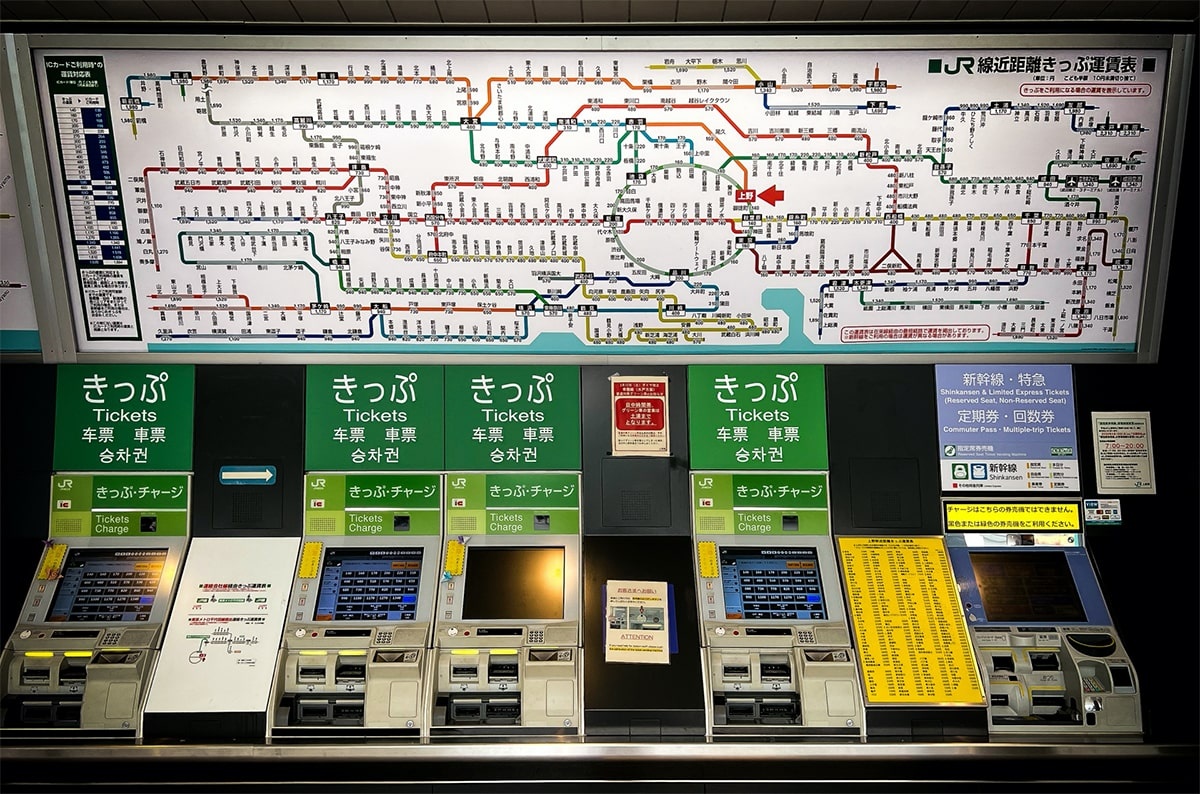
Japan's public transportation system is characterized by numerous train networks operated by various government, local, and private companies. It's common to transfer frequently, especially when using local and regional services. In major cities like Tokyo, the train network is very complex – therefore, always make sure to research your connections and transfer options in advance.
Transportation and Communication: Practical Apps
There are many useful apps that make traveling in Japan (especially if it's your first time) more enjoyable. Google Translate, DeepL, or the Japanese dictionary Imiwa (iOS only) help with language barriers, as does the voice translation software VoiceTra.
For on-the-go navigation, Google Maps is an all-in-one tool: Not only does it display your current location and travel routes, but it also provides train connections and allows you to download offline maps.
The Japan Travel app by NAVITIME includes route planners, schedules for all public transportation, offline maps, and displays free Wi-Fi hotspots. Note that most features of these apps require an internet connection to function.
IC Card: The All-Purpose Prepaid Card
IC Cards are rechargeable chip cards used for train travel and shopping in Japan. By tapping them at the ticket gates in train stations, entry is automatically granted if there is sufficient balance. The fare is deducted automatically. Similarly, they can be used at many vending machines and stores. Depending on the region, there are various providers, with Suica by JR East being one of the most popular cards.
Some railway companies (e.g., Pasmo and Suica) now offer their IC Cards as apps, eliminating the need for a physical card as smartphones can replace them. However, this usually requires a Japanese App Store account, and most non-Japanese smartphones are (still) not compatible with the system. For foreign travelers to Japan planning only a short stay, a physical IC Card (or a traditional paper ticket) is the secure alternative.
Where do I buy an IC Card?
IC Cards can be purchased at ticket vending machines or service centers at train stations/airports. Suica incurs a fee of 500 yen, which is refunded upon return of the card, in addition to the desired initial balance between 1,000 to 10,000 yen.
Which IC Cards can I use?
Depending on the region and network, not all IC Cards can be used. The following cards are interchangeable in their ticketing and payment functions, but partial routes may be excluded (e.g., the Shinkansen network): Suica, PASMO, Kitaca, manaca, ICOCA, SUGOCA, nimoca, PiTaPa, TOICA, Hayakaken. Further information is provided by the respective providers.
For Short Stays
JR East offers the Welcome Suica for foreign tourists. The 500 yen fee is waived as these cards are only valid for 28 days. An alternative is offered by the provider PASMO with the PASMO PASSPORT. Note: Refunding the remaining balance is not possible after the four-week period expires.
Attention
Due to the global semiconductor shortage, the sale of various IC Cards (including Suica and Welcome Suica) is currently either limited or suspended. Before departure, please check JR's website for the latest updates and alternatives.
JR Pass and Shinkansen: Costs and Luggage
The Japan Rail Pass (JR Pass) is one of the most popular ways for tourists to travel around Japan, as it allows unlimited usage of all JR railway lines, including the Shinkansen, within a specified period. You can purchase the JR Pass from official sales offices or the JR website.
For those intending to travel on the Shinkansen and have oversized luggage (between 161 and 250 cm in all dimensions), a specific seat reservation must be made, which includes luggage storage (at the beginning or end of the carriage). This rule currently applies only to the Tōkaidō, Sanyō, and Kyūshū Shinkansen lines.
Airport Transfer: What Options Do I Have?
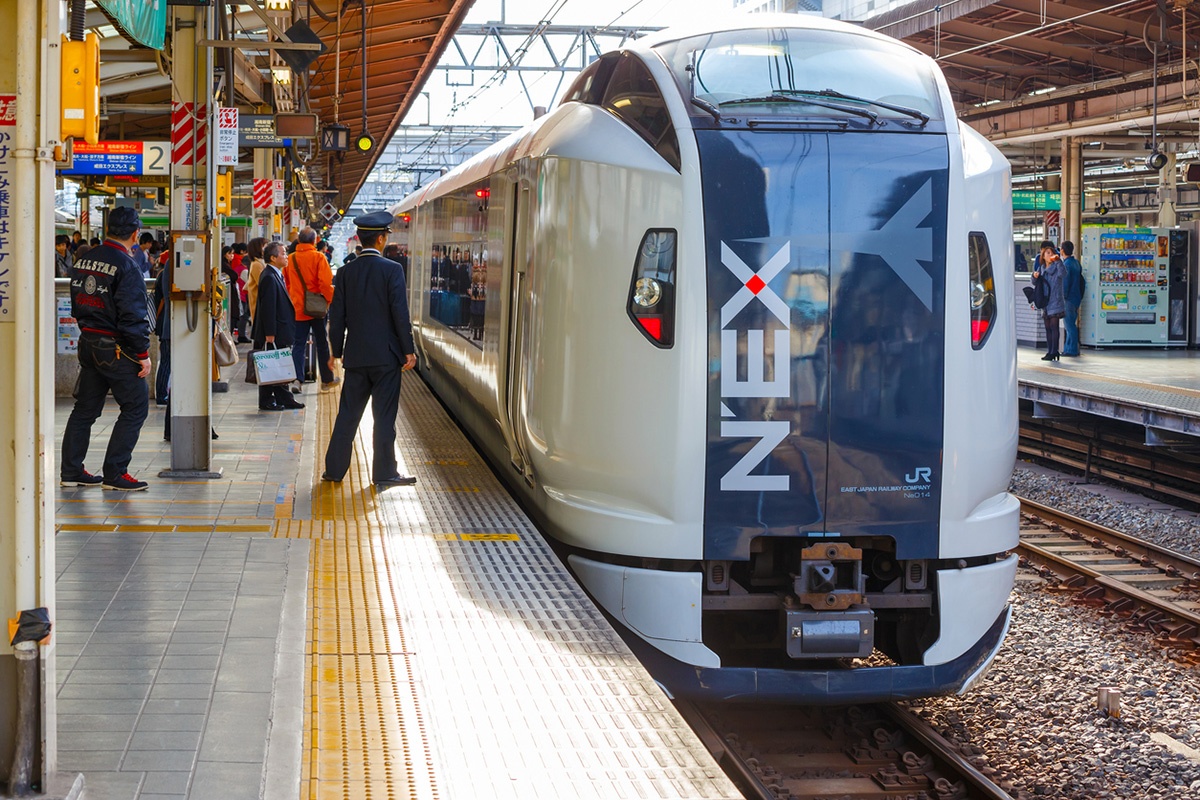
You can reach the major airports Haneda, Narita, and Kansai by train, limousine/shuttle bus, or taxi. Taxis are typically the most expensive option, costing over €100 from/to the city center. Buses serve multiple hubs in the city and surrounding areas. In the airport arrival area, you'll find counters where you can check schedules and purchase tickets; prices vary depending on the destination (€10 to €30). Note: You generally cannot purchase tickets from the bus driver.
To reach Narita Airport, you can take the JR Narita Express (NEX), the Keisei Skyliner, or the JR Sobu/Keisei Line, which takes 60-90 minutes (€10 to €30, possibly with transfers). Haneda Airport is accessible via the Tokyo Monorail or the Keikyu Line (€5 to €10, possibly with transfers). Kansai Airport can be reached via the Nankai Line, the JR Airport Rapid, or the Haruka Limited Express.
Shopping and Payment: Cash or Credit Card?
Despite the prevalence of contactless payment options, Japan is still largely a cash-based society in many places. Foreign credit and debit cards are generally accepted, but this may not be the case, especially in smaller establishments, accommodations, or markets. Check with your bank beforehand regarding card usability. Many ATMs still only accept VISA cards and not Mastercard or debit cards. Apple Pay, Google Pay, Line Pay, and IC Cards are additional (app-based) payment options, although they may not be available everywhere. Always carry enough cash with you! Tip: 7-Eleven convenience store branches usually have ATMs where you can easily withdraw cash with foreign credit cards for a small fee.
Staying Connected On the Go: Public Wi-Fi and Mobile Internet
There is no widespread public Wi-Fi in Japan. Many tourist-heavy attractions, restaurants, cafes, shopping centers, hotels, and train stations offer free Wi-Fi hotspots, but registration is often required. Availability, reliability, and speed vary greatly from place to place. To be more flexible, consider renting a mobile Wi-Fi router or purchasing a SIM card for the duration of your trip. There are various offers online where you can reserve devices and pick them up, for example, at the airport.
Public Toilets: Where to Go When Nature Calls
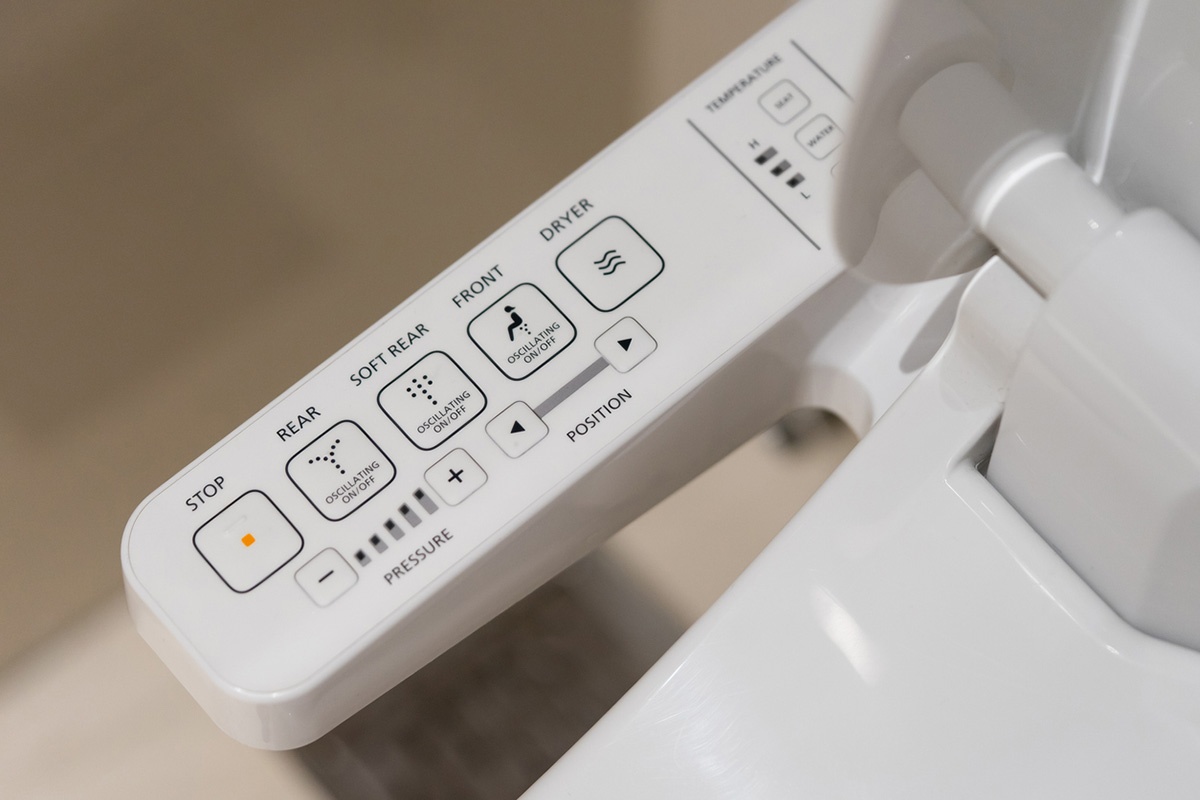
In Japan, there are public toilets available in train stations, many parks, and shopping centers, and most of them are free of charge. The toilets themselves come in Japanese-style (washiki), where you squat, or Western-style (yōshiki) for sitting. Modern toilets are often equipped with many buttons, such as for automatic opening and closing of the toilet seat or for generating noise to mask bathroom sounds. Common features also include shower functions for intimate area cleansing or even heated toilet seats. Uniform pictograms and symbols help with navigation.
We also recommend always carrying a small towel and tissues with you. These are not only useful helpers in the hot and humid Japanese summer for wiping sweat off your face but also because public toilets may not provide paper towels for drying your hands.
Tipping: What's the Norm?
In Japan, it's uncommon to give tips, and it's not expected by the service staff – in fact, it may even be refused. So, in hotels or restaurants, you don't need to worry about tipping. In Izakaya bars, you may be served a dish called otōshi (unrequested), which is a chargeable appetizer that can be considered a service charge instead of a tip. This usually amounts to around 300 to 500 yen per person. However, with private interpreters, tour guides, and bus drivers, especially when traveling in a group, tipping might be appreciated – it's best to inquire about the common practices with your tour guide or online.
Waste Disposal: Where Can I Dispose of It?
In response to the Tokyo sarin gas attacks in 1995, public trash cans were removed and remain scarce to this day. Thus, it's common practice to take your trash with you and dispose of it at home. It's advisable to carry a small plastic bag to store trash while on the go. Trash bins are typically found in train stations, outside convenience stores and supermarkets, as well as at tourist attractions. Pay attention to the labeling for proper waste separation. Never litter on the streets, as getting caught can result in hefty fines. Smoking in public areas is generally only allowed in designated zones, and ash and cigarette butts should be disposed of in portable ashtrays or designated trash bins.
In Case of Emergency: How to Act Appropriately
Dial 119 to reach an ambulance or the fire department. Use 110 to call the police, especially for thefts or accidents. Generally, English-speaking assistance is available, but at the beginning of the call, indicate that you only speak English. If you're lost, have lost valuables like your wallet or passport, or want to report found items, you can visit the nearest kōban. Kōbans are police boxes staffed by officers and serve as neighborhood contact points. For emergencies, keep the contact information of your accommodation, embassy, and possibly your international health insurance readily available, and store your valuables in a secure place.
Useful Contact Points During Your Stay in Japan
Tokyo Metropolitan Medical Information Center
Telephone consultation regarding the Japanese healthcare system and foreign language medical services in Tokyo (English, Chinese, Korean, Spanish, Thai).
Operating Hours: Daily from 9 am to 8 pm
Telephone Number: 03-5285-8181
Japan Visitor Hotline
Visitor hotline provided by JNTO. It offers tourist information and can assist in emergencies or urgent situations (English, Korean, Chinese).
Operating Hours: 24/7
Telephone Number: 050-3816-2787
https://www.japan.travel/en/uk/
TELL Lifeline
Telephone and chat counseling provided by trained staff (English).
Operating Hours: 9 am to 11 pm (irregular, see website)
Telephone Number: 03-5774-0992
https://telljp.com/lifeline/
Safety Guidelines
JNTO provides extensive information for Japan travelers regarding tourism, safety, weather, transportation, natural disasters, and medical services (English).
https://www.japan.travel/en/japan-safe-travel-information/
This article has been translated from JAPAN DIGEST and published in English.
https://www.japandigest.de/reisen/tourismus/organisatorisches/fragen-antworten-japanreise/



